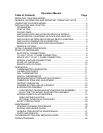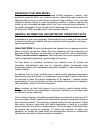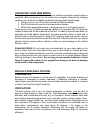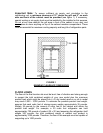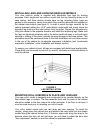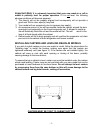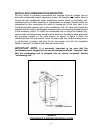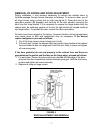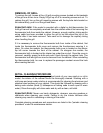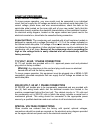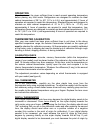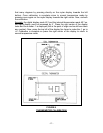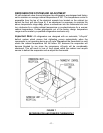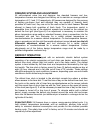
- 2 -
UNCRATING YOUR NEW MODEL
The shipping container should remain on your model as protection against dents or
scratches while transporting it to the actual set-up location. Remove the shipping
container only at the last possible moment by following these simple steps:
1. Using a pry bar, pry off and remove crate end bottom staples.
2. Pry off and remove crate front and rear bottom staples.
3. Slide crate upward and remove it, being careful not to rub against cabinet.
There are up to four (4) bolts securing the cabinet to the wooden skid. The bolts are
located at each end on the underside of the skid. In order to remove these bolts it is
advisable to tilt the cabinet backwards and place wooden blocks at each end in
order to hold it in its tilted position. Using a 3/4" socket or open end wrench, remove
the bolts and carefully slide the model off of the skid. After skid removal, the cabinet
should never be moved without dollies or rollers to avoid damage to the cabinet
bottom or floor.
Important Note: Do not under any circumstances lay your new model on its
front or sides. Only for a brief period, may you lay the model on its back and only
then, when its properly blocked so as not to crush the condensate drain tubing and
also to allow provision for your hands in order to set it in its upright position without
inflicting damage to the cabinet. Do not plug in and operate model for at least
three (3) hours after cabinet is set upright from being on its back as damage
could result to the compressor.
INSTALLATION AND LOCATION
CLEARANCES
Before moving the cabinet to its final point of installation, accurately measure all
doorways or passages to assure clearance. If additional clearance is needed,
cabinet doors and grill can be easily removed (see instructions outlined in "removal
of doors" and "removal of grill" sections).
VENTILATION
The final location site of your air cooled refrigerator or freezer must be able to
provide a large quantity of cool, clean air. The refrigeration system operates most
efficiently and trouble-free with cool, dry air circulation. Avoid locations near heat
and moisture generating equipment such as stoves, ovens, cooking ranges, fryers,
dish washers, steam kettles, etc., and also direct sunlight where temperatures can
be in excess of 100 degrees f. Also, do not select a location in an unheated room or
area where temperatures may drop below 55 degrees f. Air supply to the
condensing unit is equally important. Restricting the air supply will place an
excessive heat load on the condensing unit and adversely effect its operating
efficiency.




